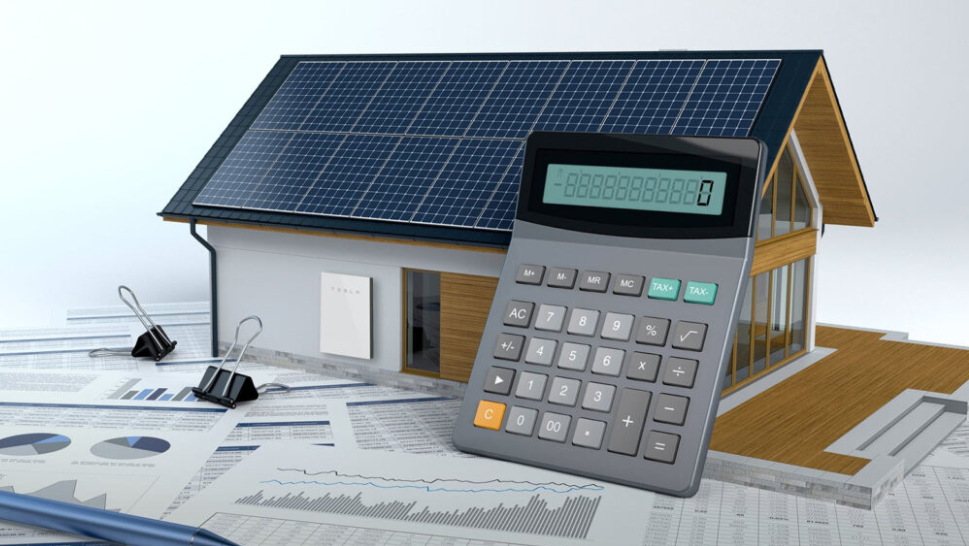For most homeowners, going solar isn’t just about sustainability — it’s about smart savings. With energy prices rising and incentives improving, solar panels can drastically cut your electricity bill. But the real question is: how much can you actually save?
That’s where a net metering calculator comes in. It turns vague promises into real numbers — showing exactly how solar energy, utility rates, and net metering policies combine to shape your financial return.
Let’s walk through how solar savings work, what factors influence them, and how to use a calculator to get your personalized estimate before you invest.
Understanding How Solar Savings Work
When you install solar panels, they generate electricity that powers your home. The more sunlight you get, the more energy you produce — and the less you buy from the grid.
But solar savings don’t stop there. Through a policy called net metering, you can earn credits for the excess energy your panels send back to the utility grid. These credits reduce your bill even further, sometimes making it zero.
In simple terms:
- You use what you generate.
- You sell what you don’t.
- You buy only when you need more.
This back-and-forth exchange is where the real financial benefit of solar lies.
What Is Net Metering and Why It Matters
Net metering is a billing system that allows solar panel owners to send excess electricity back to the grid in exchange for credits.
During sunny hours, your system might generate more power than your home needs. Instead of wasting it, the surplus electricity flows to your local utility grid. When night falls or your usage spikes, you draw electricity from the grid and use those credits to offset your costs.
Here’s why it’s important:
- It increases your total return on investment.
Every kilowatt-hour you export earns you a credit that directly reduces your bill. - It shortens your payback period.
The faster your credits accumulate, the sooner your solar system pays for itself. - It protects you from rising electricity rates.
Even if your utility prices increase, your credits maintain their value.
Why You Need a Net Metering Calculator
Every home, every roof, and every region is different. A net metering calculator helps you factor in all the variables that affect your solar payback and savings.
It considers:
- Your average monthly energy usage
- Your region’s solar irradiance (sunlight availability)
- System size and efficiency
- Your utility’s buy-back rate
- Local tariffs and incentives
Instead of guessing your potential savings, the calculator gives you a detailed forecast — including your monthly bill reduction, net metering credits, and expected payback period.
How to Use a Net Metering Calculator
You don’t need to be an engineer to figure out your solar savings. Tools like the Net Meterings Calculator make it simple.
Here’s a step-by-step breakdown:
- Enter your electricity consumption.
You can find this on your utility bill. Most calculators use your average monthly usage in kWh. - Select your location.
This allows the calculator to estimate your solar exposure and expected generation. - Input your solar system details.
Add your planned or installed system capacity (for example, 5 kW, 10 kW, etc.). - Review your utility rate.
Some calculators auto-detect local rates; others let you enter your own. - See your results.
You’ll get your projected annual savings, monthly bill offset, and total payback period.
This data gives you clarity — not just about how much you’ll save, but also when your investment will fully pay off.
See also: The Role of Automation in Business Optimization
Example: Realistic Solar Savings Scenario
Let’s imagine a homeowner in a sunny region installs a 6 kW solar system that costs $7,000 after incentives.
- Monthly electricity usage: 800 kWh
- Utility rate: $0.18/kWh
- Annual generation: 9,000 kWh
With net metering, the homeowner sends about 3,000 kWh of excess energy to the grid each year. That translates to roughly $540 in credits annually. Combined with reduced grid consumption, the total yearly savings reach around $1,600.
At that rate, the system’s payback period is about 4.5 years, after which all energy produced is essentially free. Over 20 years, that’s more than $25,000 in lifetime savings — all starting with a few minutes spent on a net metering calculator.
Benefits of Using a Net Metering Calculator Before Installation
Many people rush to buy solar without fully understanding their potential savings. Using a calculator before committing offers several key advantages:
1. Financial Clarity
You’ll know exactly what to expect — no surprises, no inflated sales pitches.
2. Customized Results
You get personalized data based on your home, not a generic estimate.
3. Smarter System Design
You can size your solar system properly to match your consumption and maximize credits.
4. Better Decision-Making
Knowing your numbers helps you negotiate better deals with installers and choose the right financing options.
5. Confidence in ROI
You’ll have hard evidence showing when and how your investment will pay back.
Common Mistakes People Make When Estimating Savings
Even with calculators, people sometimes misjudge their savings by overlooking key details. Avoid these common pitfalls:
- Ignoring seasonal variations: Solar output fluctuates throughout the year.
- Forgetting about shading or roof direction: Less sunlight means lower production.
- Not including maintenance or inverter costs: Minor, but worth noting.
- Relying on average numbers instead of local data: Always use your own consumption and regional sunlight hours.
A precise net metering calculator helps minimize these errors by considering real-world factors automatically.
Top Tip: Combine Tools for Even More Accuracy
To get the most reliable estimate, use a combination of calculators.
- Start with Google Project Sunroof to visualize your home’s solar potential.
- Then, plug your details into the net metering calculator for the financial breakdown.
- Cross-check with your utility provider’s rate sheet for added accuracy.
This layered approach ensures your forecast is grounded in both environmental and financial reality.
The Bigger Picture: Long-Term Solar ROI
The beauty of solar energy is its compounding return. Once your system pays for itself, every additional year of production adds to your savings — and your home’s value.
Long-term benefits include:
- Reduced or zero electricity bills
- Protection against rate hikes
- Higher property resale value
- Clean, renewable energy generation
In many regions, solar homes sell faster and at a premium. So even if you move before reaching full ROI, you still gain through increased equity.
Conclusion
Solar power isn’t just about reducing your carbon footprint — it’s about taking control of your energy future. And the smartest way to start is by calculating your numbers before you install.
A net metering calculator gives you the clarity you need to see exactly how much you’ll save, how quickly you’ll break even, and how strong your long-term return will be.
Don’t guess your savings. Calculate them.
With just a few inputs, you’ll know whether solar is right for your home — and how bright your financial outlook will be once the sun starts working for you.


